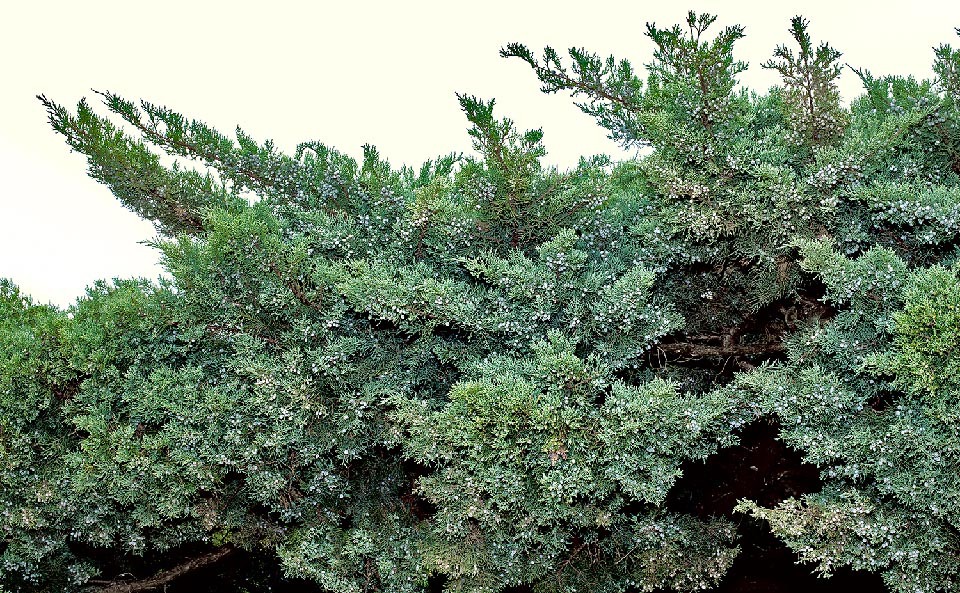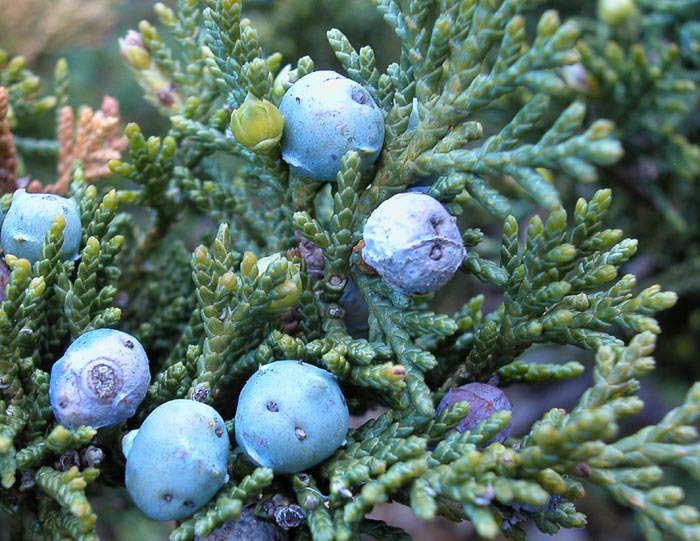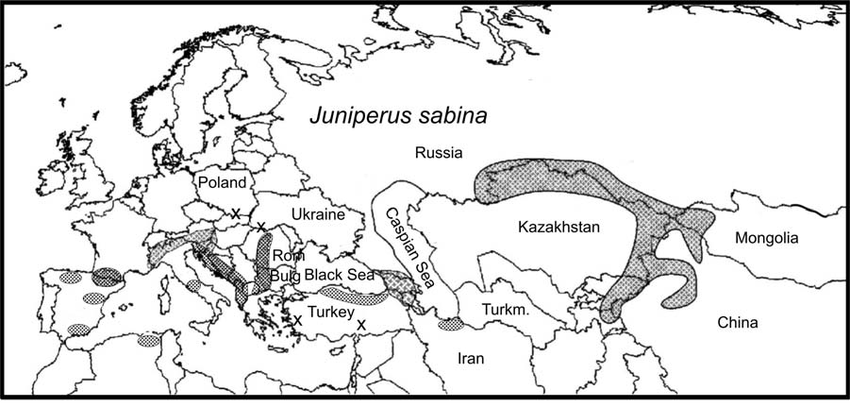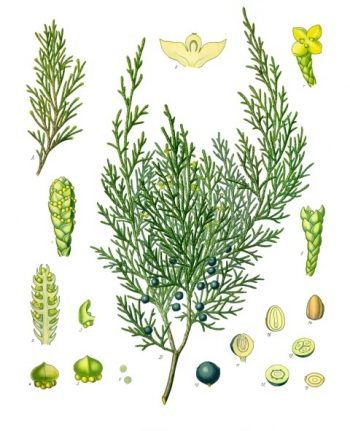
Juniperus sabina, as described in 1753 by Carolus Linnaeus (1707-1778), in Species Plantarum 2, is commonly known as savin or savin juniper; as well as Miter arrunta in the Basque language; Mozhzhevel'nik Kazatskii in Russian; Gyuva in Georgian; Kara archa in Kazakh, Konin-artsa in Mongolian and as Cha zi Yuan Bai in Chinese. The species name refers to its presence in the Sabina, Latium region between Rome and Rieti, Italy.
There are two varieties,
A hybrid of Juniperus chinensis and Juniperus sabina, known as Juniperus × pfitzeriana (Pfitzer juniper, synonym Juniperus × media), is found in the wild where the two species meet in northwestern China, and is also very common as a cultivated ornamental plant. It is a larger shrub, growing to 10 to 20 feet (3 - 6 m) tall.
Juniperus sabina is a popular ornamental shrub in gardens and parks, with numerous named cultivars selected. In addition, this plant is the alternate (telial) host of the Pear Rust fungus Gymnosporangium fuscum.
Description. Savin juniper is a shrubby, extremely variable, evergreen coniferous species of tree that grows to mature heights of 3 to 12 feet (1 - 4 m) tall, with a trunk typically measuring 12 inches (30 cm) in diameter, measured at breast height. This species is largely dioecious with separate male and female plants, but some individual plants produce both sexes.
The foliage and the seeds contain sabinol (a terpenic alcohol) and gallic acid, which is transformed into pyrogallol. Consumption of the foliage causes a severe irritation of all mucous membranes. The sabinol attacks the nervous system, causing convulsions. The pyrogallol blocks the intestinal circuit completely. Death occurs quickly.
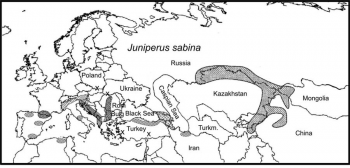
Distribution. This species is native to the mountains of central and southern Europe and western and central Asia, from Spain east to eastern Siberia, typically growing at elevations of 3,200 to 10,000 feet (1,000 - 3,300 m) above sea level. "It is very tolerant to cold, drought and gases. It has no special requirements regarding soil."
Hardy to USDA Zone 3 - cold hardiness limit between -40° and -30°F (-39.9° and -34.4°C).
